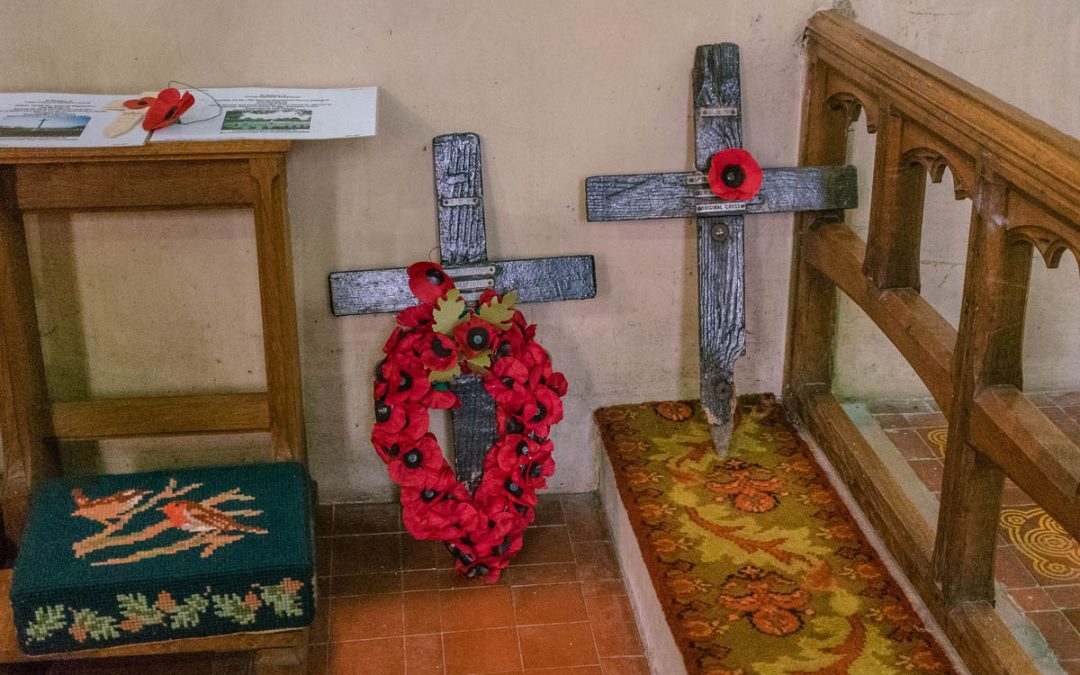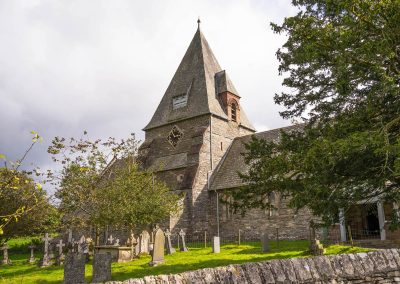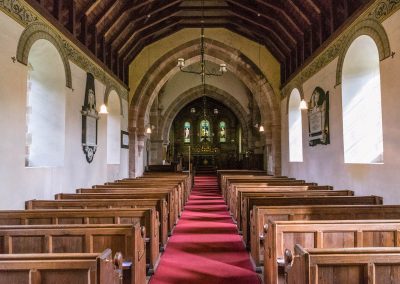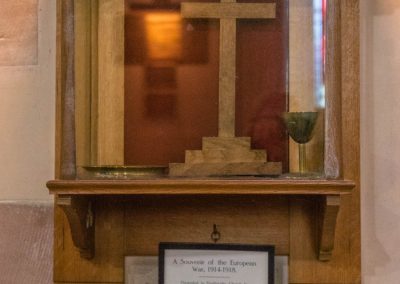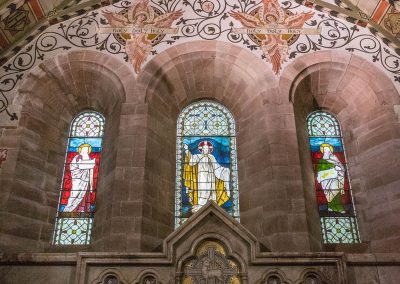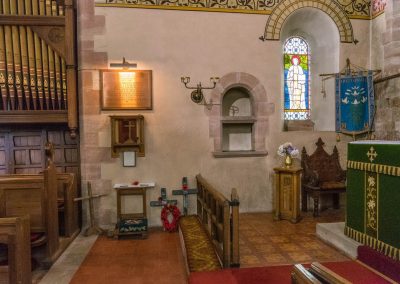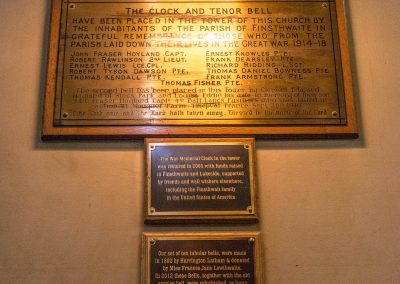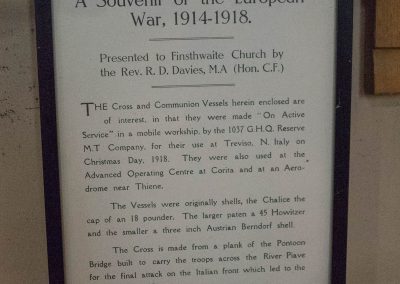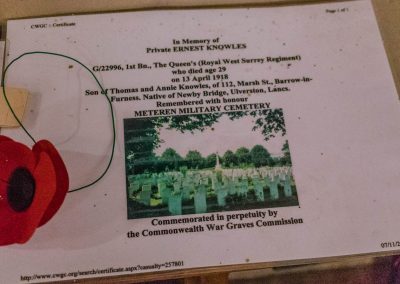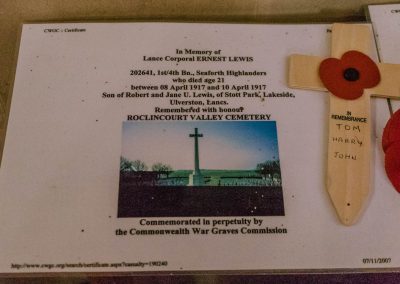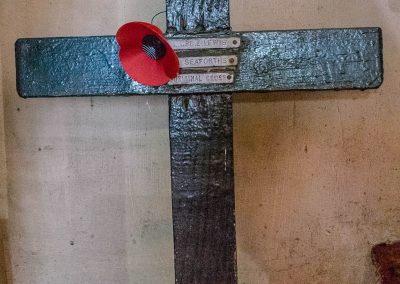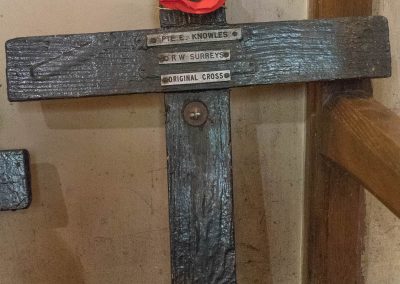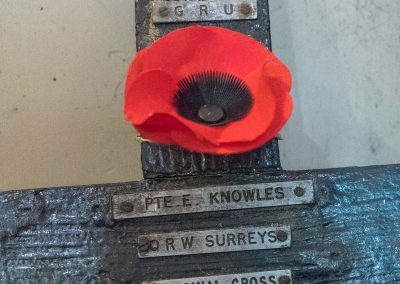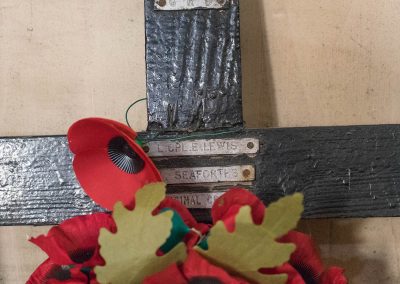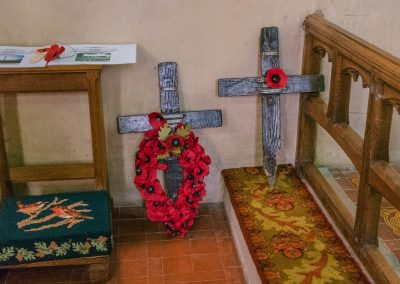KNOWLES & LEWIS
Location: St Peters Church, Lowside, Plum Green, Finsthwaite, Cumbria , LA12 8BJ
There are two crosses in the church. They are freestanding, and located on the floor in front of the altar on the left hand side.
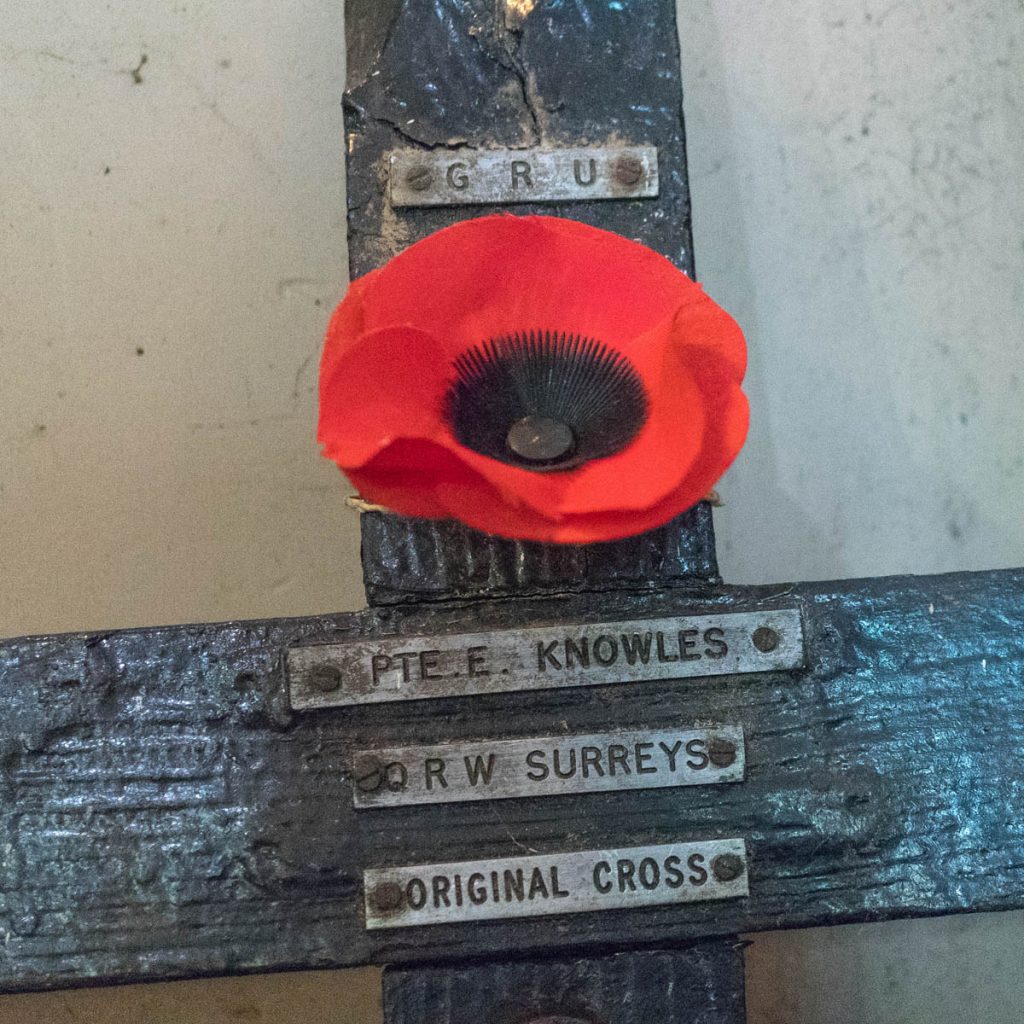
Details on cross: (cross no 1)
4 GRU tags
GRU,
PTE.E.KNOWLES,
QRW SURREYS,
ORIGINAL CROSS (not original tag).
Text type (eg. hand-written, GRU tags, carved): 4 GRU tags
Cross dimensions
Shaft Height: 609.6mm
Cross beam width: 406.4mm
Width of wood: 69.85mm
Thickness or depth: 25.4mm
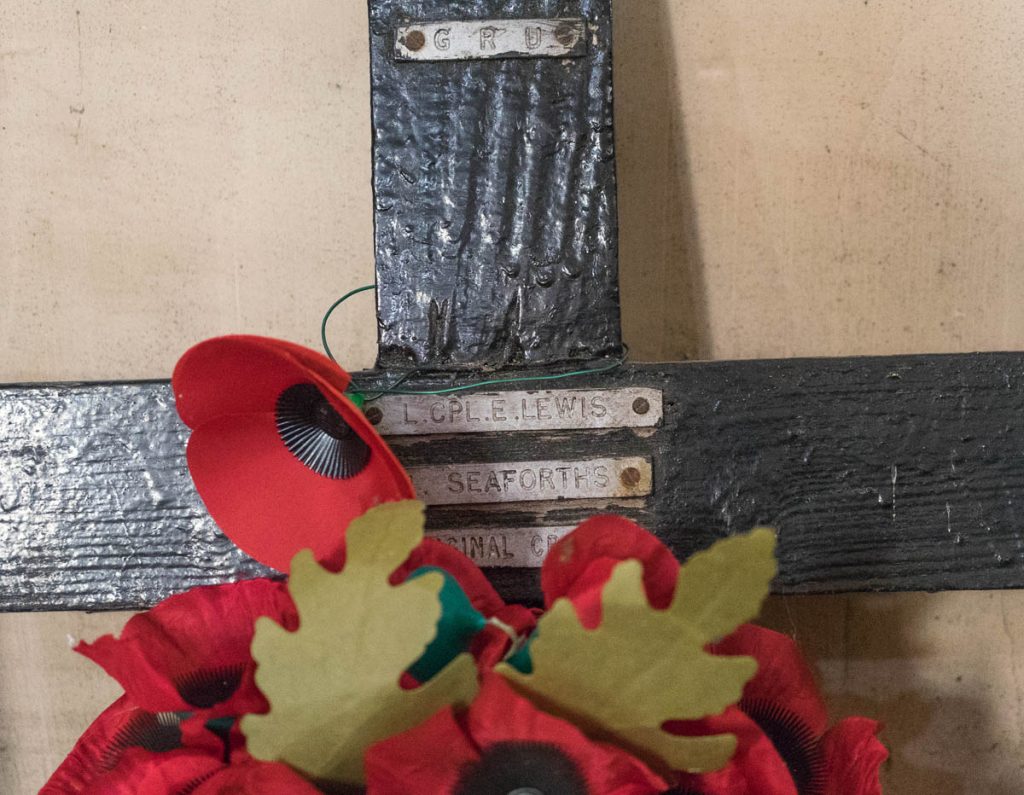
Details on cross: (cross no 2)
4 GRU tags
GRU
L.CPL.E.LEWIS
1 SEAFORTHS
ORIGINAL CROSS (not original tag).
Text type (eg. hand-written, GRU tags, carved):
Cross dimensions
Shaft Height: 609.6mm
Cross beam width: 406.4mm
Width of wood: 69.85mm
Thickness or depth: 25.4mm
Other information
Mounting to wall: n/a
Detailing: Both crosses are adorned with poppies.
Evidence of use in field (earth marking, cracking, staining, shrinkage): n/a
Surface insertion depth (into ground if apparent): The ends of the shafts are badly rotted and have been removed.
Finish (varnish, paint, oiled, unfinished etc): Both crosses are heavily varnished and dark stained.
Condition (cracked, paint peeling, woodwork, damage etc): Both crosses are rotted and deteriorated in places, and have obviously been kept outside. They are now preserved in the church. One cross has a metal rod to support the shaft.
Other notes, notes and observations: Beside the crosses is a cabinet on the wall. It contains artefacts made on active duty during the Great War. They are communion vessels – a chalice made from the cap of an 18 pounder, 2 patens made from shells, and a cross made from a plank of wood from the Pontoon bridge. This bridge carried troops across the river Piave for the final attack on the Italian front which led to the armistice in 1918.
There is also a plaque commemorating the clock and tenor bell, which were placed in the tower by parishioners in remembrance of those who died in WW1.
The church itself is beautiful and well cared for. It was built in 1874 and its architectural style is Romanesque revival.
Your name: Beverley Goodwin/Margaret Draycott
Date of survey: 20th September 2017
